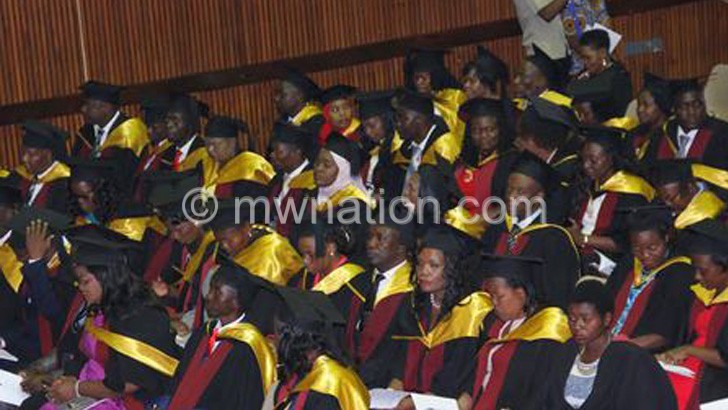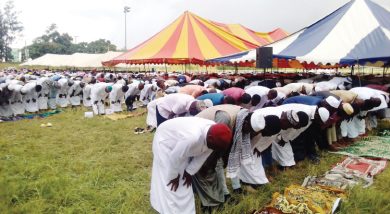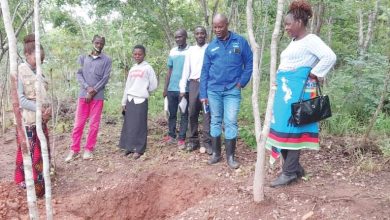The challenge of low enrolments in higher education system
As June ended, academics and leaders from Malawi’s higher education institutions met in Mangochi for a conference on higher education. In this two-part series, contributor STEVE SHARRA writes on the challenges facing the sector and solutions experts believe can solve the problems:
Held under the theme “Higher Education in the 21st Century,” the conference on higher education was Malawi’s first ever on higher education. The conference led to the formation of an Association of Malawian Universities and Colleges.

Three keynote addresses were given at the conference, the first of which was by Professor Paul Tiyambe Zeleza, a distinguished economic historian and Vice Chancellor of the Nairobi-based United States International University-Africa (USIU-A). During the closing function of the conference Professor Zeleza returned to the podium, to make a plea to the Malawian authorities.
He said he had been keenly following developments around the government’s decision to “unbundle” the University of Malawi (Unima) and turn its four constituent colleges into stand-alone universities.
Professor Zeleza explained that there was need for caution in that decision, which he said went against global trends.
He emphasized that universities the world over were consolidating their institutions, growing their enrollment numbers, and expanding their reach. The decision to “dismantle” the University of Malawi, as he saw it, went in the opposite direction.
Professor Zeleza pointed out that Malawi had the “dubious distinction of having the lowest university enrolment rate in the world,” with less than one percent of college-age Malawian attending university. The African average was 12 percent, while the global average was 33 percent. He added, in a personal conversation later, that in developed countries’ university enrolment rates were above 60 percent.
A number of factors have given Malawi this unenviable distinction. It is a legacy of missionary education from the 1870s, of colonialism from the 1890s, and of one-party dictatorship from 1964 to 1994.
When Malawi won its independence from British rule in 1964, there was no university in the country, save for a few missionary teacher training and technical colleges. Secondary school education did not start in Malawi until 1941 when the colonial government opened Blantyre Secondary School. By the time of independence in 1964, there were just a handful of secondary schools.
The pace of development in post-independence Malawi was rapid, but looking back from 21st century hindsight, it was not rapid enough. The University of Malawi was established in October 1964, three months after independence. It remained the only university in the country for the next quarter century. The African Bible College opened in 1989. Mzuzu University would not open until 1998.
Currently, Malawi’s four public universities have a total student population of about 20 000. The University of Malawi, the jewel of higher education in Malawi, in the words of Professor Zeleza, has about 13 000 students.
There are just over 25 private universities in Malawi, with a new one opening every so often. In the absence of a system to collect statistics, the total student population in Malawian public and private universities can anecdotally be estimated to be between 40 000 and 50 000.
Malawi’s population was estimated to be 17.2 million in 2017, and 73 percent of Malawians are under 35 years of age, according to the Malawi Growth and Development Strategy (MDGS III). Amongst respondents for the Malawi Demographic and Health Survey (MDHS 2015-2016), only 36 percent of men, and 26 percent of women, aged 15-49, had a secondary school education.
It is remarkable that Malawi’s founding president, the late Dr. Hastings Kamuzu Banda, established a national flagship university, three months after independence. He constructed a secondary school in each of the country’s erstwhile 24 districts within the first 10 years. Remarkable as these rapid developments were, Kamuzu was not too keen on too many Malawians attaining a secondary school, let alone university, education.
The reasons Kamuzu wanted the numbers of educated Malawians controlled are said to have been both political and economic.
A Cabinet crisis erupted weeks after Malawi attained independence in July 1964, and Kamuzu set about consolidating his grip on the country. The development policies of the early post-independent years put agriculture at the centre, and a common understanding was that the sector did not need highly educated farm workers.
The World Bank complicated matters when it declared that developing countries needed basic education more than they needed higher education, leading to cuts in funding to post-secondary education, as Zeleza told the conference.
By the time Kamuzu left office in 1994, the secondary school enrolment rate for 14-17 year-olds was 1.5 percent, according to Harvey Sindima in his paper Malawi’s First Republic: An Economic and Political Analysis published in 2002.
Today, the transition rate from primary to secondary school is 16 percent, and the tertiary enrolment rate is at 0.8 percent (MGDS III, 2018). In 2017, the four public universities enrolled just over 4 700 students, out of about 18 000 qualified applicants, according to National Council for Higher Education (NCHE).
In 2017, just over 136 000 sat the Malawi School Certificate of Education (MSCE) examination. Of these, about 84 000 passed, representing 54 percent.
NCHE stipulates that only those students scoring a minimum of six credit passes qualify for selection to university. The Malawi National Examinations Board does not release its rubric so Malawians never know what scores merit a fail, pass, credit pass or distinction, in any given year. The 18 000 who were qualified to go to university, based on NCHE’s criteria, represent 13 percent of the number that sat the 2017 exam.
Why does one need six credits to qualify for university in Malawi? Is it because anything less means one is not capable of studying at a university? Or is it because of the number of spaces available in our universities?
If it is about space, why does NCHE stipulate this for private universities also, whose selection and admission decisions are in the hands of the institutions themselves? And what should Malawians make of the 2017 numbers in which out of 136 000 who sat the MSCE, only 18 000, or 13 percent, qualified for university, disregarding space? What does that say about the quality of Malawi’s secondary education system and the MSCE examination?
For the decades the University of Malawi was the only university in the country, the limited number of spaces, which remained below 1 000 for most of that time, created in the public imagination the unintended impression that anybody who failed to make it was not bright enough. Many Malawians, including academics, still believe this.
The unavailability of space in Malawi’s higher education institutions has not only led to these epic low enrolment rates, it has also distorted the image of academic ability. Merely passing the MSCE is not seen as good enough. Even as the number of both public and private universities keeps increasing, the idea of who qualifies to go to university is stuck in the past.
The idea that only a tiny few are capable of university education is sustained by the belief that academic intelligence is in-born and innate; that we all have, to use terms by Carol Dweck, a “fixed mind-set” rather than a “growth mindset” (2006). That dangerous and mistaken idea is very much alive in Malawian society.
Tackling that myth will not be possible without addressing the history that created it, and the underlying mindsets that have sustained it. As Professor Zeleza put it, the challenge for Malawi’s higher education system is how to consolidate and grow existing institutions, and build new ones, while increasing enrolment rates.
—*Steve Sharra, Ph.D., is a senior lecturer in the Faculty of Education and director of Research and Publications at the Catholic University of Malawi. He writes in his personal capacity.





